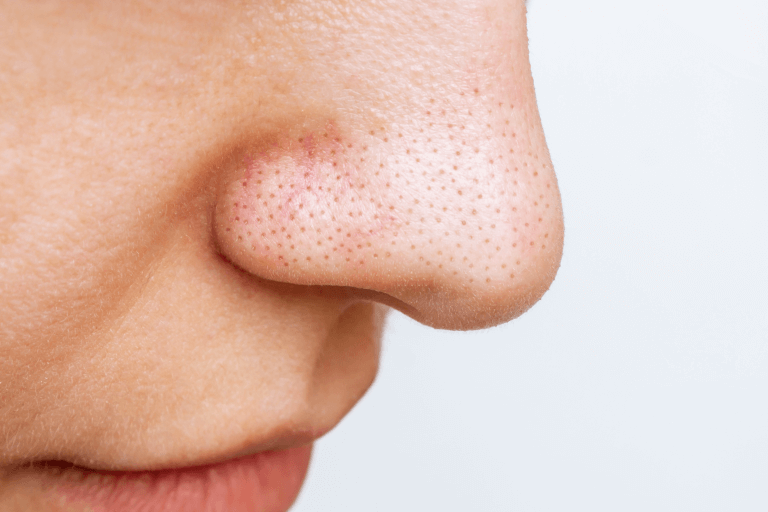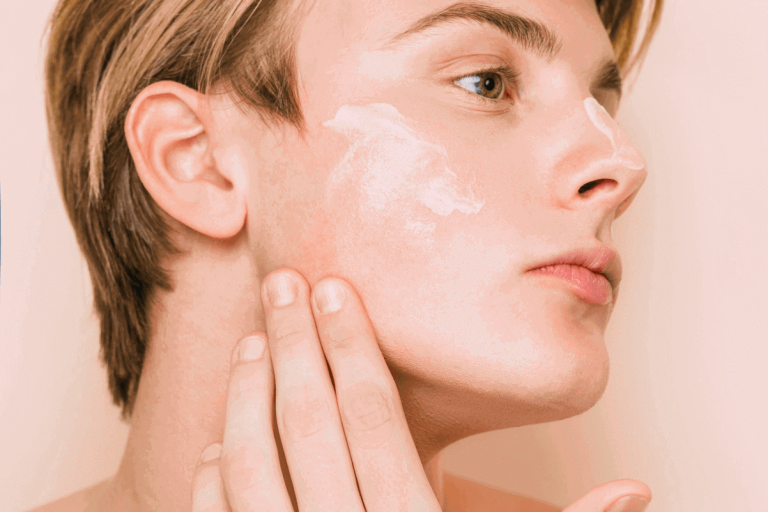How it works:
Share your skin goals and snap selfies
Your dermatology provider prescribes your formula
Apply nightly for happy, healthy skin
How it works:
How it works:
Share your skin goals and snap selfies
Your dermatology provider prescribes your formula
Apply nightly for happy, healthy skin
How it works:
Dermatologist extraction of acne—what to know, and what you should expect
This in-office treatment may help with persistent acne.



You can usually manage acne breakouts with regular skin cleansing and topical treatments. Lifestyle adjustments like diet changes may help, too. But sometimes, pimples are persistent and resist more traditional treatments. In these cases, it might be necessary to undergo a dermatologist extraction, which involves physically removing whiteheads and blackheads.¹
That said, extractions aren’t always the solution—in some cases, they can make your acne worse and cause additional skin damage. Not all types of acne can be extracted, and Do-It-Yourself methods can lead to infection and scarring.²
So, how do you know if a dermatologist extraction is your best path to clearer skin? We’re here to help you understand what this procedure entails, the pros and cons of this treatment, and the alternatives available if extraction isn’t for you.
What is a dermatologist extraction?
Extraction is more than just “pimple-popping'' or those incision-and-drainage videos you see online. It’s a multi-step process that starts with cleansing and exfoliation.
Once your skin is cleansed and prepared, extraction can begin. A specialized tool, such as a sterile needle or surgical blade, is used to open clogged pores, and an extraction tool (also called a comedone extractor) is used to remove the contents of the lesion.³ Finally, once the practitioner has removed all they can, the skin is cleansed again and soothed with non-comedogenic moisturizers and an anti-inflammatory or antimicrobial agent is applied.
It’s important to note that acne extractions normally aren’t a “one-and-done” ordeal—a thorough extraction process usually takes multiple appointments, often weeks apart, to give the skin enough time to heal between sessions.
Another important note is that extraction shouldn’t be considered a replacement for traditional acne treatments like routine cleansing and topical medications. Acne can and will return without an effective skincare routine, no matter how deep and thorough the extraction process is.
Instead, extraction should be used in conjunction with other treatments, especially in more persistent or severe cases.⁴
What types of acne can be extracted?
Dermatologist extraction is only appropriate for comedonal acne—the white and blackheads that have formed on the skin's surface. Cystic acne (such as “blind pimples”) are those hard cysts or nodules under the skin's surface, where extraction isn’t really an option.

Micro-comedones can be extracted, but the increased risk of skin damage or scarring from treating smaller acne lesions means it's best to leave the procedure to the professionals.
As always, these are only general guidelines and shouldn’t be taken as medical advice. Every person’s skin is unique. A personal consultation with a licensed dermatology provider can help you decide if your acne could benefit from an extraction procedure or if you’re better off going a more traditional route.
Advantages of acne extraction
Probably the biggest advantage to a dermatologist extraction is that it can lead to almost immediate results. Traditional skincare and treatment products may take weeks or months to show results, especially for stubborn acne resistant to traditional treatments. When that big audition or the spring formal is right around the corner, you might feel like you can’t wait so long.
Another advantage of a dermatologist extraction is the safety of professional tools and the sterile environment. A licensed dermatology provider or certified aesthetician will use specialized tools designed specifically for opening pores and extracting the contents of comedones.
As an added bonus, a dermatology provider will be a far better judge of which comedones are ready for extraction and which should be left alone. The procedure's sterility and the professional's better judgment will help minimize the risks of infection and scarring. Plus, providers will have access to prescription-only medications and chemical compounds that can aid extraction and healing.
Disadvantages of acne extraction
A dermatologist extraction procedure has several disadvantages and limitations. The biggest limitation is what types of acne can be extracted (remember, extraction is really only acceptable for comedonal acne). Sometimes cystic acne is treated by incision and drainage, but that’s a little different from the sort of extraction we’re discussing here.

One drawback is the potential scabbing that can occur after an extraction procedure. Those marks can be hard to hide since you want to avoid heavy cosmetics and skincare products until you’ve had time to recuperate. Side note: It may also be pretty painful.
Also, since the tools and environment must be sterile, it’s not a procedure that can be done safely in the comfort of your own home and must be performed at a dermatologist’s office (or other licensed professional’s office).
Finally, there’s the expense. Acne extraction can be costly, especially over multiple sessions. Some health insurance plans may cover dermatologist visits, but others may not.
Alternatives to dermatologist extraction
An acne extraction procedure shouldn’t be considered a first-line treatment option, even when done professionally by a dermatologist or aesthetician. Rather, it should be considered as an additional method to consider if typical treatments fail to produce desired results.
Traditional topical treatments
Topical treatments can be used alone or in combination with other topical or oral treatments for acne.⁵

With that said, those traditional treatments may take time to produce results. That means you must practice patience and give them time to work their magic. When it comes to acne, it’s understandable to feel a little impatient. But if no urgent deadlines are coming up, try giving your skincare routine a little more time to do its job. You might be able to avoid the potentially painful and costly extraction process altogether.
Chemical exfoliation
Another option for treating your acne breakout is chemical exfoliation, which can be done at home or at the dermatologist’s office. It usually involves some form of acid (such as salicylic or glycolic), which can come in the form of a cream, serum, or chemical peel. Chemical exfoliation can be quite effective at helping clear up acne when included as a regular part of your usual skincare routine, but be careful not to overdo it. Too much exfoliation can irritate your skin.
Other dermatologist procedures
Your healthcare provider might recommend other procedures, such as cryotherapy or optical treatment. Cryotherapy is a procedure where a dermatological professional uses low-temperature substances, including liquid nitrogen, to target blemishes on the skin for removal. Optical treatment involves the use of lasers or light to treat acne. Both of these treatments have been shown to be effective when applied correctly.⁶

Start your personal skincare journey
A dermatologist extraction for acne generally isn’t going to be the best or most appropriate option for every case. In many cases, it’s best to stick with your regular skincare routine and to try to practice patience because these things take time.
Get your personalized skincare routine with Curology
Get your personalized skincare routine with Curology


If you want to take the guesswork out of skincare, Curology is here to help. We offer personalized treatments for acne, rosacea, and anti-aging concerns. Our goal is to make effective skincare more accessible, and it starts with a consultation with one of our licensed dermatology providers. Sign up for Curology today* to take the first step on your personalized skincare journey.
FAQs
Everyone’s skin responds differently and heals at its own pace. It’s best to discuss what to expect with the trained professional performing the extractions.
Generally speaking, not if they are done correctly by a trained professional in a sterile environment with sterile tools. But at-home DIY extractions may cause scarring, irritation, and infection, leading to worse breakouts.
Give your skin plenty of time to heal and recuperate before going to your next extraction session. A good guideline is to do extractions once a month or so while also sticking to your dermatologist-approved skincare regimen between appointments.
P.S. We did the homework, so you don’t have to:
1. American Academy of Dermatology Association. What can clear severe acne?. (n.d.).
2. American Academy of Dermatology Association. Pimple popping: Why only a dermatologist should do it. (2022, November 16).
3. Fox, L., et al. Treatment Modalities for Acne. Centre of Excellence for Pharmaceutical Sciences. (June 2016).
4. Wise, E.M. and Graber, E.M. Clinical Pearl: Comedone Extraction for Persistent Macrocomedones While on Isotretinoin Therapy. Journal of Clinical and Aesthetic Dermatology. (November 2011).
5. Titus, S. and Hodge, J. Diagnosis and Treatment of Acne. American Family Physician. (2012, October 15).
6. Fox, L., et al. Treatment Modalities for Acne. Molecules. (June 2016).
Donna McIntyre is a board-certified nurse practitioner at Curology. She obtained her Master of Science in Nursing at MGH Institute of Health Professions in Boston, MA.
*Cancel anytime. Subject to consultation. Results may vary.

Curology Team

Donna McIntyre, NP-BC